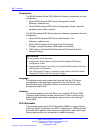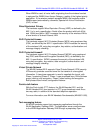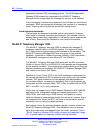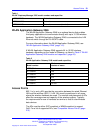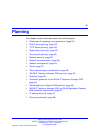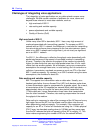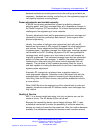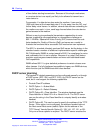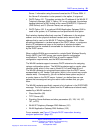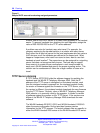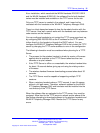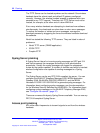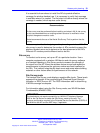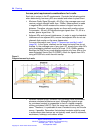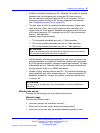
28 Planning
of time before starting transmission. Because of this simple mechanism,
a nonvoice device is as equally as likely to be allowed to transmit as a
voice device is.
For example, if a data device does seize the medium, it can send a
1500-byte frame at the lowest data rate (if it is far away from the AP), and
further delay voice frames. In addition, several data devices contending for
the medium can each, in turn, send large frames before the voice device
gained access to the medium.
Without a way to give preferential transmission opportunities to voice
devices, supporting voice applications is a tremendous challenge on
802.11 WLANs. SpectraLink Voice Priority (SVP) has evolved into a de
facto standard for Quality of Service (QoS) and serves as a model to
illustrate the functions that a successful QoS mechanism can implement.
The 802.11e standard ultimately resolves QoS issues, but the delays in the
standard create a number of additional implementation-specific challenges.
Wi-Fi Multimedia (WMM) is a step toward full 802.11e compliance for voice
and multimedia, but it is not a solution. Because it is a step, QoS feature
evolution must progress towards better and more solid standards-based
QoS capabilities.
WMM refines 802.11 to give statistical preference to certain classes over
other classes. It is fully backward-compatible to legacy non-WMM devices,
which function just like WMM best-effort class devices.
DHCP server planning
The handset IP-related parameters can be configured manually or through
a DHCP server (RFC 1541 and RFC 1533). Any DHCP server can be
used, but it must support the following capabilities.
• Provide Client IP address
•
DHCP Option 1—Subnet Mask
•
DHCP Option 3—Default Gateway
• DHCP Option 60—Class Identifier. The wireless handsets use the
Class Identifier of Nortel-221x-A or Nortel-61xx-A. The DHCP server
can use the string in the Class Identifier to uniquely identify a wireless
handset.
• DHCP Option 66. This can be used to specify the address of the TFTP
Server. If this option is not configured, the wireless handset looks at
the Next server Boot server (siaddr) Option for the address of the
TFTP Server* Vendor Specific Option 43, 128, 144, 157, 191, or 251.
Only one of these options is required. The DHCP server encodes the
Nortel Communication Server 1000
WLAN IP Telephony Installation and Commissioning
NN43001-504 03.04 Standard
23 September 2008
Copyright © 2004–2008 Nortel Networks
.



